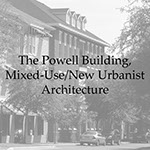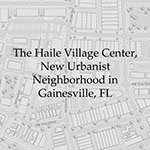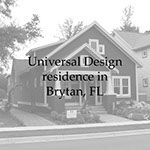Architecture for the New Urbanism
Architecture should recognize its responsibility as part of our environment. Every building and every space has an impact on the way we live. Each building should relate to the human scale and work with the other elements around it to create continuity and sense of place.
The benefits of New Urbanism are far reaching. Compared to conventional developments, it allows for more efficient infrastructure, more units per acre, and a mixture of sizes and types of units, both residential and commercial. In addition, by allowing a variety of uses in proximity, it provides the opportunity to capture automobile trips as well as reduce the number of trips originating from the neighborhood. Residents of New Urban neighborhoods actually have the option of walking to many of the services they need. On a regional scale, it can ease traffic pressures by reducing the average distance people travel to services. Concentrating people, goods and services into smaller land areas means that there is more land available near the urban centers for recreation, preservation, and agricultural uses. New Urbanism is gaining popularity with residents and business owners for the convenience and the security of a neighborhood that is occupied 24 hours a day.
Town Planning
Whether it be a new residential development, an entire new town, or the redevelopment of just a few city blocks, the proper neighborhood design is essential to a successful community. The New Urbanism is an alternative to the common patterns of growth made up of uncrossable, congested, collector streets lined with strip malls, parking lots, and entrances to isolated, homogeneous housing developments. The concept is to organize goods, services, public spaces, greenways, and a variety of housing types into a community. Proportion and scale of the street, sidewalk, and building design come together to make people, not the automobile, the focus.
Site Planning
The siting of the elements of a project can have a profound effect on how it is perceived by its neighbors and the entire community. The relationship of buildings to one another produces the character of the spaces in-between.
Universal Design
Universal design strives to be a broad-spectrum design solution which benefits people of all ages and abilities without the need for adaptation or specialized design. Further, it recognizes the importance of thoughtful design aesthetics. Our interest in universal design lies in seeking to create built environments which are more usable by as many people as possible at little or no extra monetary or aesthetic cost.
Fortified Homes
The Institute for Business & Home Safety’s Fortified for Safer Living program raises a home's overall safety above the minimum requirements set forth in building codes. The program offers a package of affordable code-plus upgrades that greatly help reduce a home's exposure to disasters, including high wind, wildfires, floods, freezing weather, hail and earthquakes, as well as water damage.




